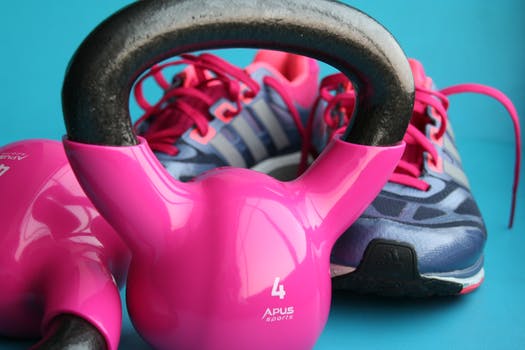Healthy Nurse, Healthy Nation™ Blog - Get Strong: A Beginner’s Guide To Strength Training
Published
 Fitness expert Sabrena Jo tells us why strength training is important and how to start.
Fitness expert Sabrena Jo tells us why strength training is important and how to start.According to Healthy Nurse, Healthy Nation's HealthyNurse Survey, only 46 percent of nurses engage in some type of muscle-building activities (Data analyzed from 3/1/20 through 4/29/21). This fact could be because of the many myths surrounding strength training. A common (and unfounded) fear about weight lifting is that it will cause you to bulk up.
Although lifting weights could possibly make you weigh more (since muscle is heavier than fat), it can help you get toned. That means you may look slimmer and likely fit into a smaller clothing size.
And, you don’t have to spend all day at the gym to get in a solid weight lifting workout. In fact, any amount you do is good for you. Unlike cardio, strength training builds muscle mass, which boosts your resting metabolism. That means you’ll burn more calories even when you’re not working out. The Centers for Disease Control and Prevention recommends all adults perform muscle-strengthening activities, involving all major muscle groups, at least twice a week.
Here are a few more reasons you might want to pick up the dumbbells:
Improve bone density
“Bone density and muscle decrease each decade of life. It’s an inevitable and natural part of aging,” says Sabrena Jo, Director of Science and Research Content for the American Council on Exercise (ACE). The good news: You can prevent bone and muscle loss by resistance training.
“There really is no other way to prevent bone loss: You can’t diet your way out of it,” says Jo. A study published in The Journal of Bone and Mineral Research supports this. Researchers found that post-menopausal women who practiced resistance training twice per week, increased their bone density and strength.
Be stronger and fitter
“Strength training is the only type of exercise that’s going to make you stronger and preserve your ability to perform activities of daily living with ease,” says Jo. Having a strong body can help you pick up your kids or grandkids, lift groceries, and may even prevent injury. In fact, research suggests that older individuals, who are at a greater risk for falling, improve balance and coordination if they practice resistance training.
Lose — or maintain — weight
Any type of physical activity can burn calories, but your body continues to burn calories after a strength-training workout. The increased muscle mass from resistance training boosts your metabolism long term, so you’ll continue to burn calories even when you’re done exercising.
Inspired to get stronger? First, talk to your health care provider to make sure it’s safe for you to begin strength training. Jo recommends spacing out strength training workouts with rest, cardio, or stretching on the non-strength training days.
Once you have the go-ahead, here are some methods to try:
Body weight exercises
You don’t need equipment to get stronger. Exercises that use your own body weight as resistance (think push-ups, squats, lunges, and sit-ups) challenge your muscles and can be done anywhere. YouTube has tons of ideas to motivate you. Take a peek at ACE’s Lean Legs bodyweight workout or this total-body workout from Women’s Health.
Resistance bands
Resistance bands are another cheap way to strength train at home or when traveling. Use the large rubber bands to add resistance to fitness moves. Consider these exercises and full-body, resistance-band workout from Greatist.
Free weights
With a few different-sized dumbbells, you can perform a wide variety of strengthening movements. Free weights help you get stronger in two ways: 1) by performing the move for specific muscles (for instance, you work the biceps during biceps curls); and 2) because your body has to work to balance and stabilize while you do the move, you’ll also strengthen your core and other parts of your body. Here are some basic moves to try with free weights.
Weight machines
The machines at the gym might seem intimidating, but don’t let them scare you. They’re actually safer and easier to use for beginners, because the range of motion is more limited than other methods of resistance training. Exercises on machines also isolate the muscles being used, which means you can focus on strengthening certain areas of the body. This can be especially helpful if you’re recovering from an injury.
Strength training classes
Lastly, taking a class can be a great way to get motivated. There’s the camaraderie, the attention from the instructor, and the fact that the class is held at a set time to keep you accountable. And classes use a variety of tools and techniques to help you get stronger. Instructors may incorporate medicine balls, weighted ropes, or kettlebells into their routines.
Ready to build muscle? Here’s a beginner’s strength training routine with more tips from ACE. Let us know how you incorporate strength-training in your fitness plan on Facebook or in the comments below.
Updated 5/7/25
Find this helpful? Share it on social media by clicking the icons to the left.

Have you joined the Healthy Nurse, Healthy Nation (HNHN) Grand Challenge yet? Join us today!
Blog Physical Activity
05/03/2018 1:19pm CDT



Post a Comment or Question